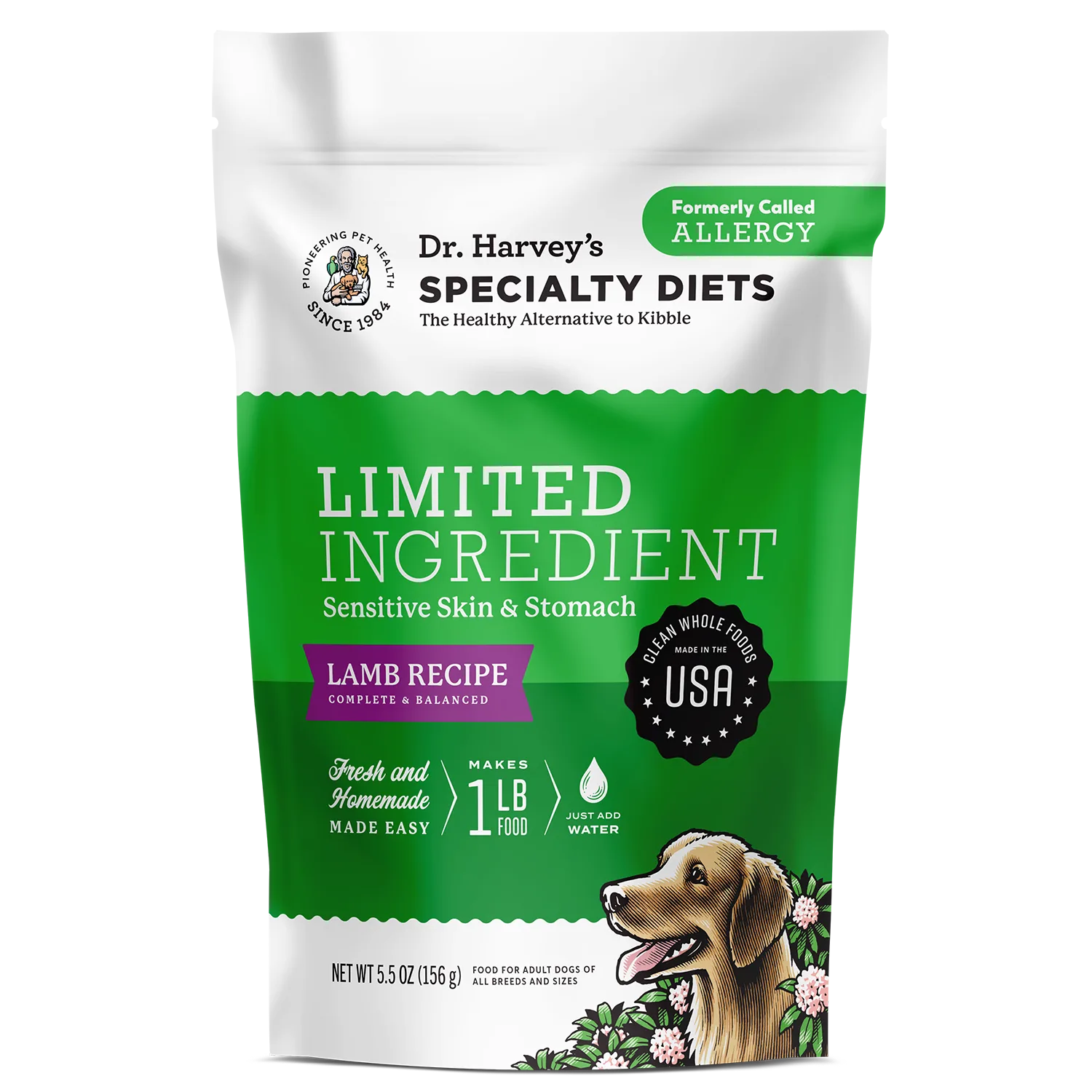
You asked, so we made it. A balanced, limited ingredient food to address one of the most common challenges dogs face: allergies. Does your dog suffer from constant itching, redness, paw biting, skin reactions or upset gut? As a pet parent, this is so hard to watch!
But did you know that one of the most common causes of canine skin problems is a dog’s diet? It’s true, and totally treatable with better nutrition! Much of commercial pet food is toxin laden and hard to digest, irritating your pet’s immune system. Many times, allergies can be traced to feeding a diet that’s low quality and highly processed.
Try Limited Ingredient for Your Dog!
Learn more about Limited IngredientDr. Harvey’s Allergy is nutrition the way nature intended
We created our Allergy food to combat canine sensitivities the natural way. This limited ingredient, grain free diet was formulated to support sensitive stomachs and skin. Our clean, balanced recipe contains highly digestible superfoods plus probiotics and prebiotic fiber for gut health.
Heal your dog from the inside out with the power of fresh, whole food nutrition Eating is believing!






